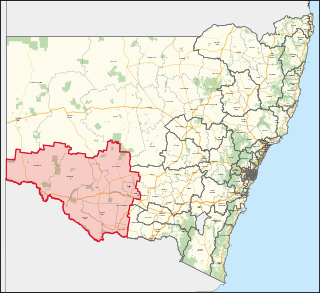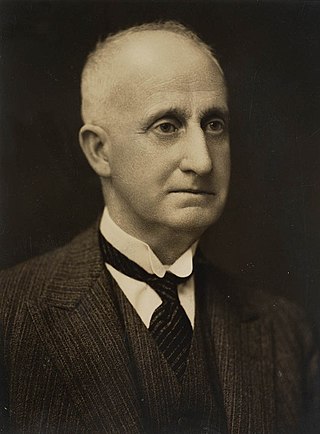There have been 18 referendums in New South Wales, 8 of which concerned proposals to amend the New South Wales Constitution, half of which concerned the Legislative Council. While the Constitution of Australia was adopted after the 1898 and 1899 referendums in all of the proposed states, the constitution of New South Wales, promulgated in 1902, was an Act of the Parliament of New South Wales which could be amended by parliament. Since 1927 the constitution has included provisions that can only be amended following approval in a referendum. [1] 8 of the referendums, including 5 on the sale of alcohol, did not involve any proposed amendment to the constitution. [2] While these have traditionally been called referendums, they could also be described as plebiscites. [3]

The New South Wales Legislative Assembly is the lower of the two houses of the Parliament of New South Wales, an Australian state. The upper house is the New South Wales Legislative Council. Both the Assembly and Council sit at Parliament House in the state capital, Sydney. The Assembly is presided over by the Speaker of the Legislative Assembly.

Sir Philip Woolcott Game, was a British Royal Air Force commander, who later served as Governor of New South Wales and Commissioner of Police of the Metropolis (London). Born in Surrey in 1876, Game was educated at Charterhouse School and entered the military at Royal Military Academy Woolwich, gaining his commission in 1895. Serving with the Royal Artillery, Game saw action in the Second Boer War and the First World War. After serving with distinction and bravery, Game transferred to the Royal Flying Corps in early 1916 serving as General Trenchard's chief staff officer. Finishing the War as an acting major-general, Game remained in the Royal Air Force after the close of hostilities. Notably he served as Air Officer Commanding RAF India and Air Member for Personnel. He retired from the military in 1929, having reached the rank of air vice-marshal.

The Government of New South Wales, also known as the NSW Government, is the executive branch of state government in New South Wales, Australia, and is empowered by the state Constitution. Since Federation in 1901, New South Wales has been a state of Australia, and the federal Constitution regulates its relationship with the Commonwealth. Under the Australian Constitution, all states ceded legislative and judicial supremacy, but retained powers in all matters not in conflict with the Commonwealth.
In Australia, referendums are public votes held on important issues where the electorate may approve or reject a certain proposal. The term is commonly used in reference to a constitutional referendum which is legally required to make a change to the Constitution of Australia.

The Court of Disputed Returns in New South Wales is a court within the Australian court hierarchy established initially in 1928 pursuant to the Parliamentary Electorates and Elections Amendment Act, and since 2017 pursuant to the Electoral Act 2017. The jurisdiction of the Court is exercised by the Supreme Court of New South Wales and the Court considers petitions concerning the validity of any election or return under the Act. The Court is concerned with elections held for the New South Wales Parliament and local government elections within the state.
A referendum concerning reform of the New South Wales Legislative Council was put to New South Wales voters on 25 May 1991. The referendum coincided with that year's New South Wales general election. The change passed comfortably. The text of the question was:
Do you approve of the Bill entitled 'A Bill for an Act:
(a) to reduce the number of politicians in the Legislative Council and to reduce their maximum term of office; and
(b) to apply to the Legislative Council the same method of filling casual vacancies as applies to the Senate ?
Macquarie, until 1910 The Macquarie was an electoral district of the Legislative Assembly in the Australian state of New South Wales, created in 1894 and named after the Macquarie River. It was re-created in 1904, retaining nothing but the name, then abolished in 1920.
Newcastle East was an electoral district of the Legislative Assembly in the Australian state of New South Wales. It was created in 1894, when multi-member districts were abolished, and the three member district of Newcastle was divided between Newcastle East, Newcastle West, Kahibah, Waratah and Wickham. from 1894 to 1904, when it was abolished as a result of the 1903 New South Wales referendum, which required the number of members of the Legislative Assembly to be reduced from 125 to 90. Newcastle East was absorbed into the district of Newcastle.

Murray is an electoral district in the Australian state of New South Wales.
A referendum concerning the abolition of the New South Wales Legislative Council was put to New South Wales voters on 29 April 1961. The abolition was specifically rejected by voters. The text of the question was:
Do you approve of the Bill entitled "A Bill for an Act to Abolish the Legislative Council to provide that another Legislative Council shall not be created, constituted or established nor shall any Chamber, Assembly or House, other than the Legislative Assembly, designed to form part of the Legislative Parliament of New South Wales, be created, constituted or established until a bill for the purpose has been approved by the electors in a referendum to amend the Constitution Act, 1902 and certain other Acts; and for purposes connected therewith."
The 1981 New South Wales referendum was held on 19 September 1981, the same day as the state election. The referendum contained two questions:
- Do you approve a Bill for an Act to extend the maximum period between general elections for the Legislative Assembly from 3 years to 4 years?
- Do you approve a Bill for an Act to require Members of Parliament to disclose certain pecuniary interests and other matters?
This is a list of members of the New South Wales Legislative Council from 1851 to 1856. The 1851 Electoral Act increased the number of members in the Council to 54, 18 to be appointed and 36 elected. The initial appointments were made in October 1851. The Speaker was Charles Nicholson.

Sir John Beverley Peden was an Australian jurist and politician. Born in Randwick to farmer Magnus Jackson Peden, a mayor of Randwick, and Elizabeth Neathway Brown, he attended public school at Bega before studying at Sydney Grammar School and the University of Sydney, where he received a Bachelor of Arts in 1892 and a Bachelor of Laws in 1898. He was an assistant lecturer in Latin at the university from 1896 to 1898, when he was called to the bar. He lectured in law from 1903 and became a professor and faculty dean in 1910. Appointed to the New South Wales Legislative Council as a Nationalist in 1917, from 1929 to 1946 he was president of the council; he was both the last president appointed directly by the governor, and the first elected by his fellow councillors. Peden died in Paddington in 1946.
Members of the New South Wales Legislative Council who served from 1930 to 1932 were appointed for life by the Governor on the advice of the Premier. This list includes members between the 1930 state election on 25 October 1930 and the 1932 state election on 11 June 1932. The President was Sir John Peden. The Premier Jack Lang had been seeking to swamp the council, however the Governor Sir Philip Game had declined to do so in November 1930, March, June and September 1931 when Lang sought 70 new members be appointed. In November 1931 Lang dropped his request to 25 new members and the governor agreed to the request. This raised the number of members of the council from 85 to 110.

The Constitution Act 1902 is the founding document of the State of New South Wales, and sets out many of the basic principles of the Government of New South Wales. This act created the foundation of the Executive, Legislative and Judicial branches of the Government of New South Wales. Most of the Constitution can be amended through ordinary Acts of Parliament, however some sections can only be amended through a referendum of NSW voters.
The 1978 New South Wales referendum was held on 17 June 1978 and contained a single question:
Do you approve of the Bill entitled 'A Bill for an Act to provide for the election of members of the Legislative Council directly by the people'.
A referendum concerning the reform of the New South Wales Legislative Council was put to New South Wales voters on 13 May 1933 and was passed by the voters with a margin of 2.94%. The text of the question was:
Do you approve of the Bill entitled "A Bill to reform the constitution and alter the Powers of the Legislative Council; to reduce and limit the number of Members of the Legislative Council; to reconstitute the Legislative Council in accordance with the reformed constitution; to amend the Constitution Act, 1902, and certain other Acts; and for purposes connected therewith."
A referendum concerning the closing hour for licensed premises and registered clubs was put to voters on 15 February 1947. The referendum was conducted on the basis of optional preferential voting. Preferences were not counted as a majority voted to maintain the 6:00 pm closing time.
A referendum concerning the closing hour for licensed premises and registered clubs was put to voters in New South Wales on 15 February 1954.
A referendum concerning whether hotels should be allowed to trade on Sundays was put to voters in New South Wales on 29 November 1969 but was unsuccessful.